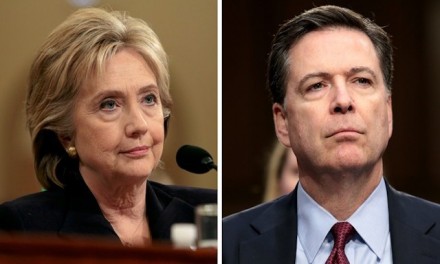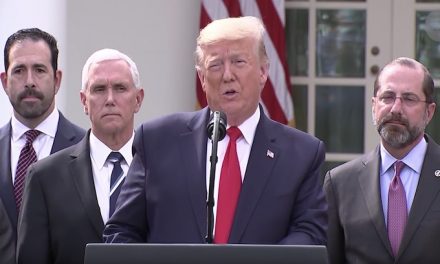The state’s newly enacted education funding bill includes a “historic investment” in efforts to boost the number of teachers of color in Minnesota, but there were missed opportunities, too, a chief advocate for the cause said Friday.
“We’re in a deep hole, and it’s going to take decades to get out of this hole,” said Paul Spies, legislative action team lead for the Coalition to Increase Teachers of Color and American Indian Teachers in Minnesota.
A Star Tribune analysis has found that although about one-third of the state’s kindergarten through 12th-grade students are nonwhite, teachers of color make up about 5% of full- and part-time teachers.
Coalition members and others have in recent years cited research showing teachers of color help narrow the achievement gap between students of color and their white peers and inspire kids to stay in school, too. That’s helped prompt legislators and Gov. Tim Walz to sign off on a bill last week that triples the existing K-12 spending on teacher-of-color recruitment and retention to about $13 million annually, according to a coalition analysis.
The bulk of the new spending involves increases in existing programs, but new to the mix are bonuses to attract teachers from other states plus $750,000 in one-time funding for the group Black Men Teach, which has the relatively narrow goal of adding Black male teachers at eight metro area elementary schools.
Hopkins Public Schools Superintendent Rhoda Mhiripiri-Reed, the board chairwoman for Black Men Teach, told a state Senate committee this year that 80% of the teachers at six elementary schools in her district were white women — and just two were Black males in a school system in which nearly half of the students are nonwhite.
“We do need teachers of color across the state of Minnesota, but the data and the research clearly demonstrate that Black male educators are almost absent from the profession,” she said. “Cultivating Black males to be elementary educators, and working diligently and directly within the schools, is our secret sauce at Black Men Teach.”
The Come Teach in Minnesota hiring bonuses were pushed by the teachers-of-color coalition and will total $200,000 annually. The program allows a district or school to offer a bonus of $2,500 to $5,000 to an eligible American Indian or person of color from another state or country, and $4,000 to $8,000 if the teacher meets a licensure shortage in the economic development region in which the school is located.
Half of the bonus will be paid when the teacher begins work and the other half after four years of service. A special fund has been created to reimburse districts providing the hiring bonuses.
The biggest increase went to the state’s “grow your own” programs, which take educational assistants, for example, and put them on a track to a teaching license through hands-on training and college or university coursework. The coalition proposed raising the funding from $1.5 million to $8.5 million a year and came away with $6.5 million annually.
The legislation also closed a loophole of sorts that allowed many white teachers to participate in the program. As of July 1, at least 80% of the grant funds for tuition scholarships or stipends benefiting school employees or community members affiliated with a district must go to people of color or American Indians.
A policy change that didn’t make the cut was an effort to set a goal for annual increases in the percentage of teachers of color. Spies said that while everyone agrees that hiring more teachers of color is a priority and the investment this year was appreciated, it still was about 55% of what the coalition said was needed in its proposed Increase Teachers of Color Act.
“Our next steps,” he said, are “to keep coming back and keep working on a systemic change.”
Anthony Lonetree
©2021 StarTribune. Visit startribune.com. Distributed by Tribune Content Agency, LLC.
—-
This content is published through a licensing agreement with Acquire Media using its NewsEdge technology.



















affirmative action school teachers now.
minnesota is lost to me just as the west coast.
if that aint racial wth is?
AHH, but remember your libtardism 101.
ITS NOT racist/sexist when The LEFT DOES IT. ITs only racist/sexist, when we white conservatives do it.
I have no problem with recruiting more black teachers.
IF the only qualification of those teachers IS NOT that they are black.
We need qualified, non-racist, moral people to teach our children, IRREGARDLESS of their race.
How many times have the dishonorable Democrats put a black person in charge, Just Because they were black.
Without the qualifications, training, experience or mentally suited, but just because they needed a black person.
So much for quality control, when the control goes over to the color of the skin rather than the content of the heart, mind and soul. We’ve all seen the bragged about soul of the black community which left the Judeo-Christian tradition decades ago. I’m not so sure making people of color who chose hate, envy, resentment and false narratives of history our teachers and instructors, who just need to show up in black or brown skin to take a job away from someone more qualified, but not as politically polluted. He who controls the minds of the children controls the future which will not brighten by darkening the color of people’s skin, but the illuminating of all people’s minds. Why put the socially damaged in charge who can only damage that which they come into contact with to further pass the damage on to our children. When in doubt, cull them out. Let the most qualified win the positions of influence, not the most violent, discontented and politically indoctrinated to redistribute success of others based on race, rather than earn and create more of it based on hard work, effort and proven success. Let Those who have learned the ability to first govern SELF do the instructing, so that they can empower our youth with the very same qualities that are required for a nation of Self-government to succeed and thrive.
These days, that’s the MAIN REQUIREMENT.. You be of the right color/political persuasion/gender identity..
WHO CARES if you are the best person for the job or not.
Is Minnesota gradually becoming the next California?
ITS well on its way there…
Teachers of Color Act, in other words practicing racism against qualified whites.
I wonder, do they consider latinos, asians or the like “POC”, or is this just only meaning BLACK FOLK!
Just like Ford with the Model A. Yes any color as long as it is black.
Sounds like a noble goal but will it come at the expense of educational quality, the lower of standards to meet artificial quotas that have plagued many other businesses and institutions? on the other hand this may be a way to insinuate radical dogma into education by more covert means, in other words hire teachers who support CRT and Project 1619!
SINCE the 60s onward, EVERYTHING THE LEFT has done, has been at the expense of LOWERING STANDARDS thus education drops…
The program should be called “Dumb Um Down” Bring the teachers down to the level of the student. Yep that will work
The program should be called “Dumb Um Down” That will work but not for the students
If they are ‘dumbing them down tot he student’s level. WHY HAVE TEACHERS in the first place. Just get the students to teach each other!
Another way to be anti-racist is to offer race based pay. What is next? Banks adding money to the amount specified on withdrawals based on race? Public toll booths charging based on race?
When you are accepted into a collage in-spite of not meeting the minimum requirements just because you are black, and graduate under the same considerations, you need all the help you can get.
Not directly related to this article but I really believe the teachers unions should be investigated for political racketeering.
Racketeering is a crime related to organized coercion & extortion.
The teachers unions are using those tactics of actual or threatened teacher walkouts unless publicly funded schools meet their political / ideological demands.
If needed, federal &/or state laws must be passed to mandate that public school teachers funded by citizens must teach basic subjects solely on objective unbiased proven facts, not slanted by personal, ideologixal, political, theoretical or other such baloney.
If junior / senior high school students with parents consent want to.attend elective classes on the joys of Marxist tyranny or black is good / white is bad or gender is flexible biology be damned that are outside of regular school hours then they can go for it.
But publicly funded schools should not be forcibly teaching students that they must embrace any particular political or ideological opinion as being irrefutable or be forced on entire society without their consent.
IF WE Had governors, and senators with a SPINE, they damn well SHOULD GET done for rakettering and extortion.. JUST LIKE BLM should…
But unfortunately, we don’t.. Not anymore it seems.